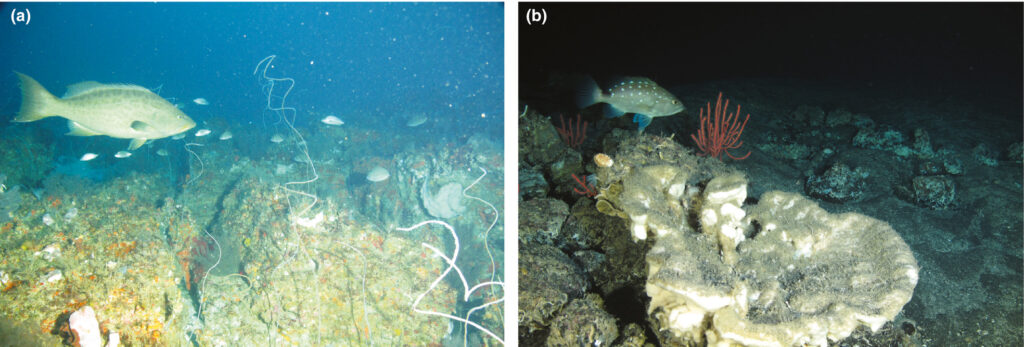A recent study has revealed that isolated deep-water habitats with small spatial footprints, like shipwrecks, may host disproportionate abundances of deep-water groupers.
Previous research has shown that rocky reefs, artificial reefs, and shipwrecks provide ecologically valuable habitats for a diversity of marine species, ranging from reef fishes to top predators. In particular, scientists have observed high counts of grouper aggregating on deep shipwrecks. Curious as to whether these observations are rare, or perhaps part of an underlying pattern, NCCOS and partners synthesized four decades of direct observations from deep-water habitats along the southeastern United States, from North Carolina to Florida.

The team reviewed 439 remotely operated vehicle transects, 235 human-occupied vehicle transects, and 881 hook-and-line drops to determine where aggregations of large-bodied groupers have occurred. Scientists identified six hotspots of deep-water grouper, including three shipwrecks, two artificial reefs (intentionally sunken ships), and one natural boulder field.
Similarities among the identified grouper hotspots include that all six are relatively isolated structures surrounded by large expanses of sandy, unstructured habitat, located between 50 and 300 meters deep. Grouper counts at these hotspots exceeded counts of grouper outside of hotspots by several orders of magnitude. In one location, scientists observed 540 grouper on a wreck about the length of a football field.
This study supports previous findings that shipwrecks, artificial reefs, and natural reefs can function as ecologically valuable habitat. Research partners for this study include NOAA Fisheries, University of North Carolina Wilmington, North Carolina State University, and Bates College.

